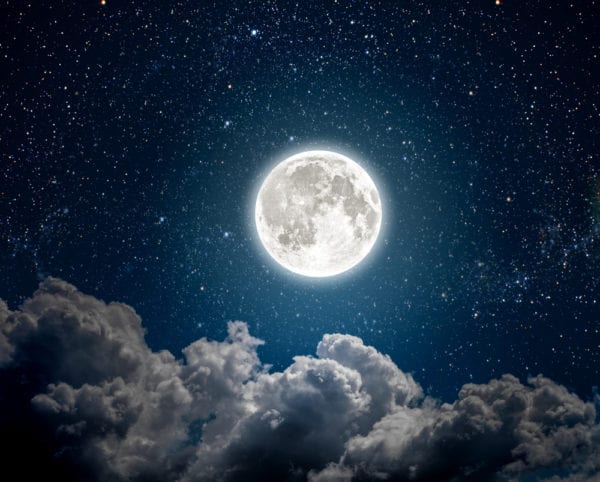Mistress of the night: the moon
Mistress of the night: the moon
Mistress of the night: the moon
-
Hannah
-
Hannah


This holiday season, I have been fortune enough to do some stargazing. The night skies have been velvety blankets sprinkled with stars, and the moon… magnifique!
I have always been fascinated by astronomy and astrology, but more than anything the moon has captured my imagination since childhood. Little wonder back then when it features so prominently in children’s stories and rhymes – from the cow jumping over the moon in ‘Hey Diddle Diddle’ to little lost Hansel and Gretel trying to follow their trail of breadcrumbs in the moonlight. But then childhood melted away, yet feeling wonder whenever I looked up at night never did.
Of course, I am not remotely alone in my fascination with the mysterious, omniscient moon. For centuries dreamers have gazed upwards and pondered. One of my favourite such ponderings is this poem by Thoreau entitled ‘The Moon’:
The full-orbed moon with unchanged ray
Mounts up the eastern sky,
Not doomed to these short nights for aye,
But shining steadily.
She does not wane, but my fortune,
Which her rays do not bless,
My wayward path declineth soon,
But she shines not the less.
And if she faintly glimmers here,
And paled is her light,
Yet always in her proper sphere
She’s mistress of the night.
When it came to writing my latest novel, Legacy, I found myself very drawn to the line ‘She’s mistress of the light’, so much so that I named my heroine Luna. Here is the hero Ruy’s reaction when he learns her name:
‘Luna,’ he murmured, as if tasting the sound on his tongue. From his sinfully perfect lips, her name sounded positively decadent. ‘A Spanish name. The moon, Queen of the Night … Yes, of course.’
Ruy has reason to be moved by this name, because a gypsy once foretold:
‘The moon will sail up into your sky one day, my boy, and will take hold of your soul. Fate has a strange way of playing tricks on its chosen ones. Go with the tide. If you fight your fate, you will be punished. She is a capricious mistress.’
The symbolism of the moon is threaded through the book; there is the sense that just as the moon watches over all eternally from the skies, in Legacy the moon is ever-present, wielding a quiet but potent magic. For Ruy and Luna, forging a future together means stepping out of the darkness and into the light; it means, in a sense, capturing that moonlight.
‘I have seized the light – I have arrested its flight!’
So declared Frenchman Louis-Jacques-Mandé Daguerre way back in the nineteenth century. Though little fanfare is made of it, today is in fact a historic day: on this day in 1839 Daguerre took the first photograph of the moon.
Daguerre was an artist who was renowned for his theatre design work, and he invented the diorama (which merits an article of its own). But he is best remembered as the founding father of photography. If you’re thinking that his name, Daguerre, is familiar, it is likely because he created the daguerreotype process, the Polaroid film of its day and the foundation for all modern photography.
Sadly, two months after taking his moon photograph, Daguerre lost all of his work when his laboratory burnt down, so I can’t share that seminal picture with you. But here is the oldest surviving daguerreotype photograph of the moon, taken a year later by American doctor John William Draper (source: Time magazine):

Such an early photograph says much about the human fascination with this ethereal and beautiful mistress of the night. When I look at such photographs and read poems like Thoreau’s, I am stirred to thinking we should all look heavenward more often and ‘seize the light’.
Once while I was in Palma de Mallorca there was a super moon bright enough that I could read on the boat ride back to the ship while in the inner harbor. I have seen other super moons, but that one is to remember forever.
Lovely. I hope you were able to take a photograph.
Happy New Year,
Hannah
http://uploads.disquscdn.com/images/a0cf8232f13d7e934e18d7bac372647956695e5e3dc3dc758d873a35d59c6888.jpg http://uploads.disquscdn.com/images/264549891c17c048f9cdac36f0fc3bb1fe0e5e76f5a02bc44546f403d2ee20d4.jpg
No pictures of the moon, but many pictures of Palma. I labeled the picture of the upside down building as Doll House. The other is the Palma Cathedral. The gardens on the climb from sea level to the cathedral are amazing.